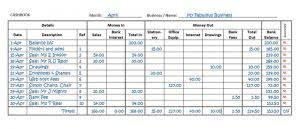Content
- Why Calculating Your Collection Period Is Important
- How is the Average Collection Period Formula Derived?
- Why calculate the average collection period formula?
- How to Calculate the Average Collection Period
- The Importance of Calculating Your AR Collection Period
- How AR automation software can lower your average collection period
- Limitations of the Average Collection Period Ratio

The business might then compare this figure to previous figures to provide greater context. If, in the year before, the business’s average collection period was 20 days, then that means that the average collection period was reduced by roughly five days year-over-year. That’s good news for the business—it’s getting paid quicker, which should provide it with greater liquidity. The average https://intuit-payroll.org/ collection period ratio is the average number of days it takes a company to collect its accounts receivable. Net credit sales equal total credit sales after factoring all returns during the accounting period. Using those assumptions, we can now calculate the average collection period by dividing A/R by the net credit sales in the corresponding period and multiplying by 365 days.

It even amounts to the accounts receivables for a certain accounting period. It can set stricter credit terms limiting the number of days an invoice is allowed to be outstanding. This may also include limiting the number of clients it offers credit to in an effort to increase cash sales. It can also offer pricing discounts for earlier payment (i.e. 2% discount if paid in 10 days). Alternatively and more commonly, the average collection period is denoted as the number of days of a period divided by the receivables turnover ratio.
Why Calculating Your Collection Period Is Important
Net credit sales is the total of all sales made on credit less all returns for the period. If you need help establishing KPMs or automating essential accounts receivable collection processes, contact the professionals at Gaviti. We’ve got years of experience eliminating inefficiencies and improving business.
Some construction companies balance their short and long term projects to improve their average collection period. This is a good number for the car lot because it is less than the one year they ask customers to pay off the credit. If this number was greater than 365, it would mean the customers were late with payments or not paying off the cars.
How is the Average Collection Period Formula Derived?
Calculating the average collection period for any company is important because it helps the company better understand how efficiently it’s collecting the money it needs to cover its expenditures. The average collection period is often not an externally required figure to be reported. The usefulness of average collection period is to inform management of its operations. This is important because as the average collection period increases, more clients are taking longer to pay.
The 2nd portion of this formula is essentially the % of sales that is awaiting payment. The % of sales awaiting payment is then used as the % of time awaiting payment throughout the period. From here, the % of time awaiting payment is converted into actual days by multiplying by 365. Suppose a company generated $280k and $360k in net credit sales for the fiscal years ending 2020 and 2021, respectively. The formula for calculating the average collection period is as follows.
Why calculate the average collection period formula?
Second, knowing the collection period beforehand helps a company decide the means to collect the money due to the market. BIG Company can now change its credit term depending on its collection period. This has been a guide to Average Collection Period Formula, here we discuss its uses along with practical examples.
If your company requires invoices to be paid within 30 days, then a lower average than 30 would mean that you collect accounts efficiently. An average higher than 30 can mean that you’re having trouble collecting your accounts, and it could also indicate trouble with cash flow. Knowing your company’s average collection period ratio can help you determine how effective its credit and collection policies are. If a company has a low average collection period then that is a good thing compared to having a high average collection period. With a lower average collection period, it means the business or company gets to collect its payments faster compared to one with a higher collection period. The only problem is that this is an indication that the credit terms of the company or business are rigid.
How to Calculate the Average Collection Period
You can get an idea of how your business can use this metric when determining future cash flow. This metric lets you figure out if you’ll remain liquid, with enough incoming cash in the future to pay for everyday needs and more. When disputes occur, there is often a string of back and forth phone calls that draw out the process of coming to an calculating average collection period agreement and getting paid. Collaborative AR automation software lets you communicate directly with your customers in a shared cloud-based portal, helping you resolve these problems efficiently. When there’s an issue with an invoice, your customer can leave a comment directly on the invoice or proceed with a short payment and specify why.
- For example, the median DSO for the machinery industry is 57 days, whereas, for the metals and mining industry, it’s 32 days.
- The secret to accounts receivable management is knowing how to track and measure performance.
- However, it is difficult to conclude the same with just this metric.
- The average collection period of accounts receivable is the average number of days it takes to convert receivables into cash.
- The numerator of the average collection period formula shown at the top of the page is 365 days.

